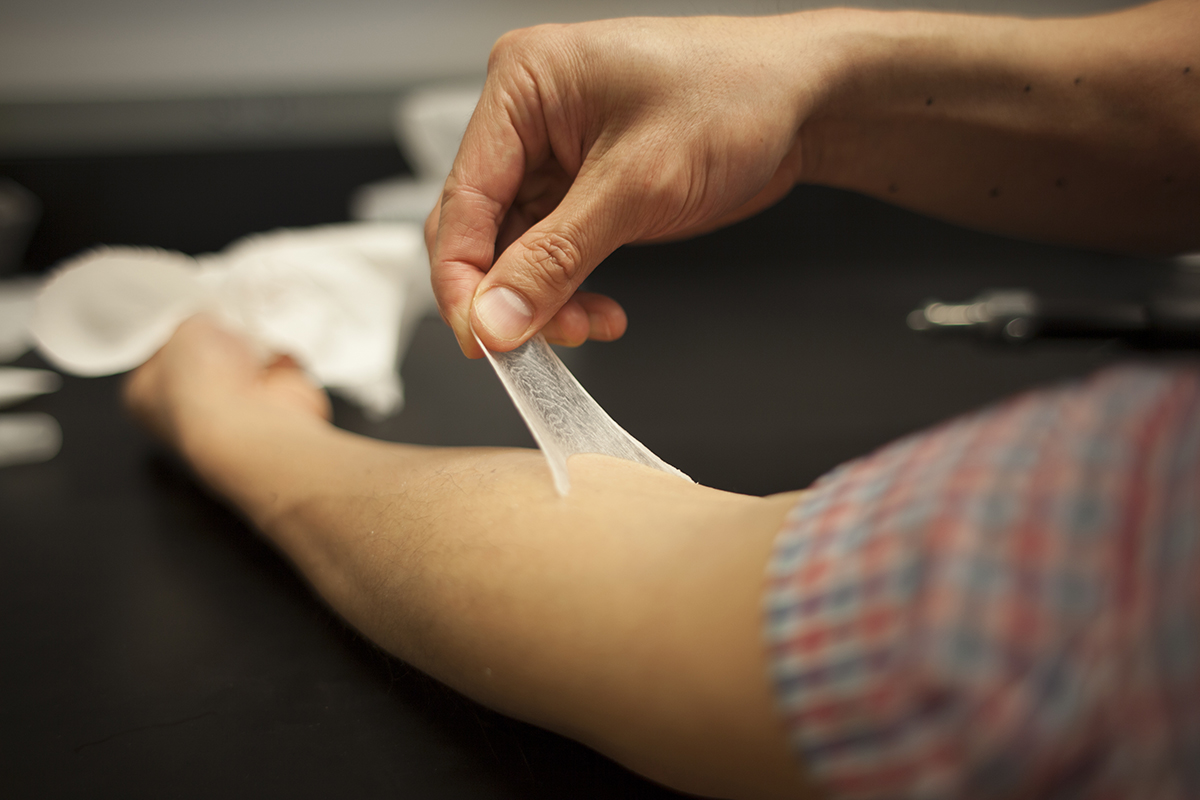Wrinkle Cure of Your Dreams May Haunt Your Nightmares

Second skin photo by Melanie Gonick/MIT
You’ve tried creams. You’ve tried serums. You’ve tried makeup. But the miracle skin product you’ve been waiting for may be none of the above.
Scientists from MIT, Living Proof, Massachusetts General Hospital, and Olivo Labs have created a “second skin”—actually a silicone-based polymer called XPL—that may be able to smooth wrinkles, reshape under-eye bags, and hydrate skin. Someday, the researchers say, it could potentially also be used to treat skin conditions like psoriasis, and to apply long-lasting sun protection.
If it sounds too good to be true, well, that’s because it is—for now. There’s no word on commercial availability or pricing yet, which means it may be quite a while before XPL shows up at your local Sephora, if it ever does at all. Then, of course, there’s the removal process: a downright snake-like shedding of a layer of “skin” that just may haunt your nightmares.
Nonetheless, XPL is a promising breakthrough, both in the beauty and dermatology realms. “It’s an invisible layer that can provide a barrier, provide cosmetic improvement, and potentially deliver a drug locally to the area that’s being treated,” Daniel Anderson, an MIT chemical engineering professor and one of the authors of a paper published in Nature Materials, told MIT News. “Those three things together could really make it ideal for use in humans.”
The polymer is applied to the skin as a cream or ointment, then topped with a catalyst that allows it to stay on, in the form of a durable, nearly imperceptible top layer, for up to 24 hours. While it’s on, the polymer mimics the properties of healthy skin, hopefully bestowing some of those qualities upon your actual body. In preliminary tests, it was shown to improve elasticity, reduce the appearance of wrinkles, and help the skin retain moisture.
To learn more about XPL, check out this video produced by MIT:


